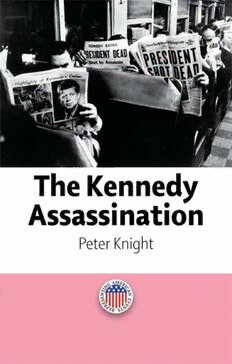
The Kennedy Assassination PDF
193 Pages·2007·1.487 MB·English
Most books are stored in the elastic cloud where traffic is expensive. For this reason, we have a limit on daily download.
Preview The Kennedy Assassination
Description:
November 22nd 1963, Dealey Plaza As a seminal event in late twentieth-century American history, the Kennedy assassination has permeated the American and world consciousness in a wide variety of ways. It has long fascinated American writers, filmmakers and artists, and this book offers an authoritative critical introduction to the way the event has been constructed in a range of discourses. It looks at a variety of historical, political and cultural attempts to understand Kennedy's death. Representations include: journalism from the time; historical accounts and memoirs; official investigations, government reports and sociological inquiries; the huge number of conspiracy-minded interpretations; novels, plays and other works of literature; and the Zapruder footage, photography, avant-garde art, and Hollywood films. Considering the continuities and contradictions in how the event has been represented, the author focuses on how it has been seen through the lens of ideas about conspiracy, celebrity and violence.He also explores how the arguments about exactly what happened on 22 November 1963 have come to serve as a substitute way of debating the significance of Kennedy's legacy and the meaning of the 1960s more generally. Key Features: * presents information about the event itself, the cultural context of the period, and the consequences of the event * considers the ways in which the event has been represented in subsequent years in a variety of discourses * includes an annotated bibliography and 10 B&W illustrations.
See more
The list of books you might like
Most books are stored in the elastic cloud where traffic is expensive. For this reason, we have a limit on daily download.
